-
[Common name]: Galapagos penguin
[Binomial name]: Spheniscus mendiculus
[Population]: 1800
[Status]: EN
[Trend]:
[Notes]:
[Image]:
(Species by global population) -
[Common name]: Humboldt penguin
[Binomial name]: Spheniscus humboldti
[Population]: 3300 – 12 000
[Status]: VU
[Trend]:
[Notes]:
[Image]:
(Species by global population) -
[Common name]: Fiordland penguin
[Binomial name]: Eudyptes pachyrhynchus
[Population]: 5000 – 6000
[Status]: VU
[Trend]:
[Notes]: Only mature individuals were included in the count.
[Image]:
(Species by global population) -
[Common name]: Yellow-eyed penguin
[Binomial name]: Megadyptes antipodes
[Population]: 5930 – 6970
[Status]: EN
[Trend]:
[Notes]: Estimate is dated (1988/89).
[Image]:
(Species by global population) -
[Common name]: African penguin
[Binomial name]: Spheniscus demersus
[Population]: 75 000 – 80 000
[Status]: EN
[Trend]:
[Notes]: 5000 breeding pairs in Namibia & 21 000 in South Africa.
[Image]:
(Species by global population) -
[Common name]: Snares penguin
[Binomial name]: Eudyptes robustus
[Population]: 93 000
[Status]: VU
[Trend]:
[Notes]:
[Image]: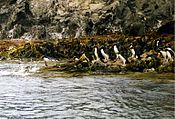
(Species by global population) -
[Common name]: Erect-crested penguin
[Binomial name]: Eudyptes sclateri
[Population]: 195 000 – 210 000
[Status]: EN
[Trend]:
[Notes]: Population breeds in two locations: the Bounty Islands (26 000 pairs), & the Antipodes Islands (41 000 pairs).
[Image]:
(Species by global population) -
[Common name]: Northern rockhopper penguin
[Binomial name]: Eudyptes moseleyi
[Population]: 530 000
[Status]: EN
[Trend]:
[Notes]: Only mature individuals were included in the count (265 thousand pairs); population has declined 57% in the past 37 years.
[Image]:
(Species by global population) -
[Common name]: Emperor penguin
[Binomial name]: Aptenodytes forsteri
[Population]: 595 000
[Status]: NT
[Trend]:
[Notes]:
[Image]:
(Species by global population) -
[Common name]: Gentoo penguin
[Binomial name]: Pygoscelis papua
[Population]: 774 000
[Status]: LC
[Trend]:
[Notes]: Only mature individuals were included in the count (387 thousand pairs).
[Image]: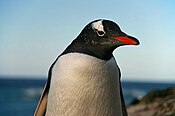
(Species by global population) -
[Common name]: Royal penguin
[Binomial name]: Eudyptes schlegeli
[Population]: 1 700 000
[Status]: NT
[Trend]:
[Notes]: Only mature individuals were included in the count (850 000 pairs on Macquarie & over 1000 pairs on Bishop and Clerk). Estimate is from the 1980s, but population is stable.
[Image]:
(Species by global population) -
[Common name]: Southern rockhopper penguin
[Binomial name]: Eudyptes chrysocome
[Population]: 2 460 000
[Status]: VU
[Trend]:
[Notes]: Only mature individuals were included in the count (1.23 million pairs); population has declined 34% in the past 37 years.
[Image]:
(Species by global population) -
[Common name]: Magellanic penguin
[Binomial name]: Spheniscus magellanicus
[Population]: 2 600 000
[Status]: NT
[Trend]:
[Notes]: Only mature individuals were included in the count (1.3 million pairs).
[Image]: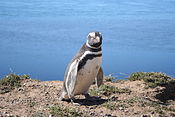
(Species by global population) -
[Common name]: Adélie penguin
[Binomial name]: Pygoscelis adeliae
[Population]: 4 740 000
[Status]: LC
[Trend]:
[Notes]: Only mature individuals were included in the count (2.37 million pairs).
[Image]: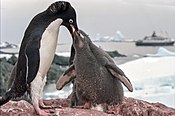
(Species by global population) -
[Common name]: Chinstrap penguin
[Binomial name]: Pygoscelis antarcticus
[Population]: 8 000 000
[Status]: LC
[Trend]:
[Notes]: Minimum estimate.
[Image]:
(Species by global population) -
[Common name]: Macaroni penguin
[Binomial name]: Eudyptes chrysolophus
[Population]: 18 000 000
[Status]: VU
[Trend]:
[Notes]: Only mature individuals were included in the count (9 million pairs); main population centres at Île des Pingouins, Heard and McDonald (1 million pairs each), Kerguelen (1.8 million pairs), & South Georgia (2.5 million pairs).
[Image]: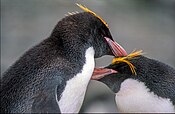
(Species by global population)
New Random Display Display All Items(16)











